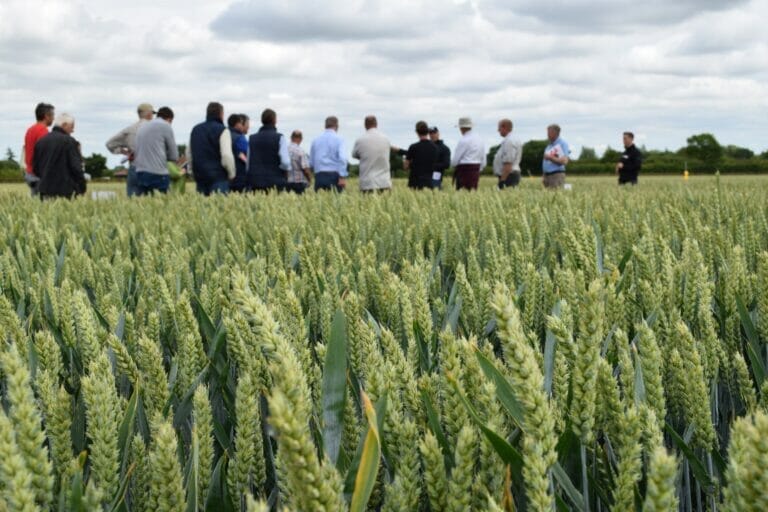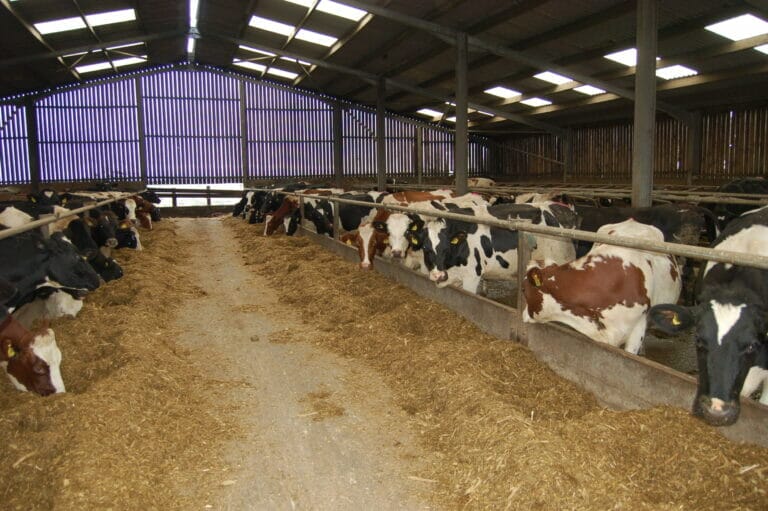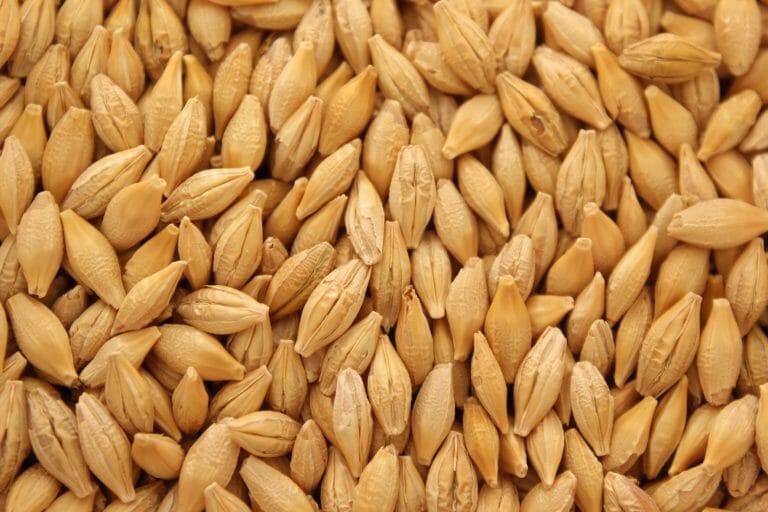
Breeders Limagrain UK have opened the doors to its main Lincolnshire Wolds trials site, to give growers a unique insight into the performance of new and existing cereal varieties in another challenging dry season.
The event, near Market Rasen, showcased numerous wheat and barley varieties coming through the firm’s breeding programme, alongside others already on the Recommended List, from Limagrain and rival breeders.
“The site is at a reasonably high altitude (around 300 ft above sea level), which means varieties can perform very differently here compared with other locations, so it’s important we use these trials to understand the variety differences better,” Limagrain’s Ron Granger said.
A relatively cold, dry spring, followed by a hot, dry start to summer, had caused reduced tillering and earlier senesce in many of the mid-October sown plots, but had highlighted some clear differences in the resilience of varieties to droughty conditions.
High yellow rust pressure earlier in the season had also reinforced the importance of strong genetics in keeping crops clean and maximising photosynthetic potential.
With continental conditions likely to become more common in the UK, Mr Granger said it was important the industry learned to adapt to the climate through variety choice and agronomy.
Indeed, he said Limagrain was exploring the potential benefits from several continental varieties, such as a German and French wheat that looked to have merit, although more would be known about their suitability for the UK after this harvest, once yield and quality assessments had been done.
Taller varieties
Breeding programmes for wheat are mainly located around the Cambridge region, and previous dry seasons had clearly highlighted the benefits of taller varieties being more robust in these testing conditions, Mr Granger continued.
LG Skyscraper, for example, had proved popular on the lighter land of the Wolds and had been the highest yielding variety for three years, with good specific weight and potential to go into a range of markets.
RL Candidate, LG Redwald, also looked very promising, with potential to raise the yield bar considerably, offering huge biomass and very high yield potential at 106%, plus decent disease scores for Septoria and Brown Rust, and Orange Wheat Blossom Midge (OWBM) resistance.

LG Redwald
The variety’s large, strong tillering capacity meant it covered the ground very well, and trials have shown that the variety could be sown at lower seed rates with minimal difference to yield. This made it a good potential option for wider row, direct drilling systems, although it should not be drilled too early. Nitrogen and growth regulator applications also had to be managed carefully, given the variety’s large biomass, Mr Granger noted.
Another moderately tall, strong tillering variety suited to earlier direct drilling and regenerative agriculture systems was LG Typhoon.
“It’s one of the latest varieties to move in the spring, so does suit the earlier drilling period. It’s not the highest yielding variety, but it has already proved to be a very safe and secure package, yielding 102% over the last three years across every region, and has shown promise as both a second wheat and in the earlier drilling situation.”
Crucially, for growers in high-risk areas for yellow rust and Septoria, such as Lincolnshire, LG Typhoon has a great disease resistance profile with stacked resistance for both diseases, offering one of the strongest genetic resistances available. It also has good standing power and OWBM resistance.
A variety that is National Listed and did not go forward as a Candidate this season is also showing potential for regen systems, LG Aldaniti. “It’s one of the cleanest varieties for rusts and Septoria and has great tillering capacity, short, stiff straw, good specific weight and early maturity.
“We need more varieties like LG Typhoon and LG Aldaniti to fit regen systems, as I don’t think all the current varieties on the RL will suit the situation. As breeders, we have so much diverse genetics and I think we can do better.”

LG Skyscraper
Investigating nitrogen
Given the increasing interest in regenerative agriculture and focus on improving nitrogen use efficiency (NUE), the Rothwell site had this season hosted nitrogen response trials.
In wheat, the response to increasing nitrogen rates was compared in four LG varieties – LG Aldaniti, LG Skyscraper, LG Typhoon and LG Redwald – to see how they fared at rates from 150 kg N/ha upwards, increasing in 30 kg N/ha increments.
“Many crops in general were being over-fertilised by up to 20%, so growers need to better adapt strategies to the season and plant requirements,” Mr Granger said.
The dry spring, for example, meant granular nitrogen had not been applied to plots until there was adequate soil moisture to facilitate root uptake. When in a drought situation, plant requirements were supplemented using foliar nutrients and trace elements instead.
Elsewhere, Limagrain was screening potential new ‘N-Flex’ winter oilseed rape varieties to find those with enhanced NUE, marketing manager, Will Charlton added.
Varieties were deliberately being grown in lower nitrogen situations to see which performed best and conserved a higher proportion of their optimal yield over multiple years, before being deemed to have the N-Flex trait.
“N-Flex is a characteristic identified in some of our elite hybrid WOSR lines that are able to convert available nitrogen into higher and more secure yields, giving enhanced yield security. So, when nitrogen applications are sub-optimal, yield penalties in N-Flex varieties are less than they are in other varieties.”
Ambassador was the first N-Flex variety to be launched and has since been joined by others including LG Aviron and LG Antigua, with further lines coming in the future, he noted.
Valuing regional trials
Local farmer, Colin Chappell, attended the Rothwell open day and valued the opportunity to assess how new varieties and existing varieties performed in local growing conditions, rather than having to rely on national trials information.
“I’m particularly interested to learn more about LG Redwald, as it’s one I’d like to try growing next season. We have maize in the rotation, so I’m considering sowing it after that, as a big biomass variety to mop up nutrients and stabilise soil structure after the maize has been harvested.”
Mr Chappell, who manages 645 ha near Brigg, is currently growing a range of milling, biscuit and feed wheats in a varied rotation. This season’s winter wheat varieties include 50 ha of the Group 1 milling wheat Crusoe, grown on contract for Warburtons.
“We’ve always grown a lot of LG varieties, and started growing Crusoe when it was launched, as it had decent yields and good quality. It has proven to be an easy variety to look after, and although brown rust risk does have to be managed, that’s fairly easy to deal with at ear wash timing.”

Nitrogen Use Efficiency has been a big focus for Mr Chappell. Last year, he used a range of in-season testing options to achieve an average NUE of 84% from the 220 kg N/ha applied to a crop of Crusoe that yielded 11.5 t/ha, and easily met his current 12.5% grain N requirement.
“The economics of chasing full 13% milling specification by applying 300 kg N/ha have to be questioned at today’s prices, and when you consider that half of the carbon footprint for one tonne of wheat is due to artificial fertiliser.”
Improving NUE would remain a priority, and he therefore welcomed the work that breeders, such as Limagrain was doing within this area to improve farm practices.
































